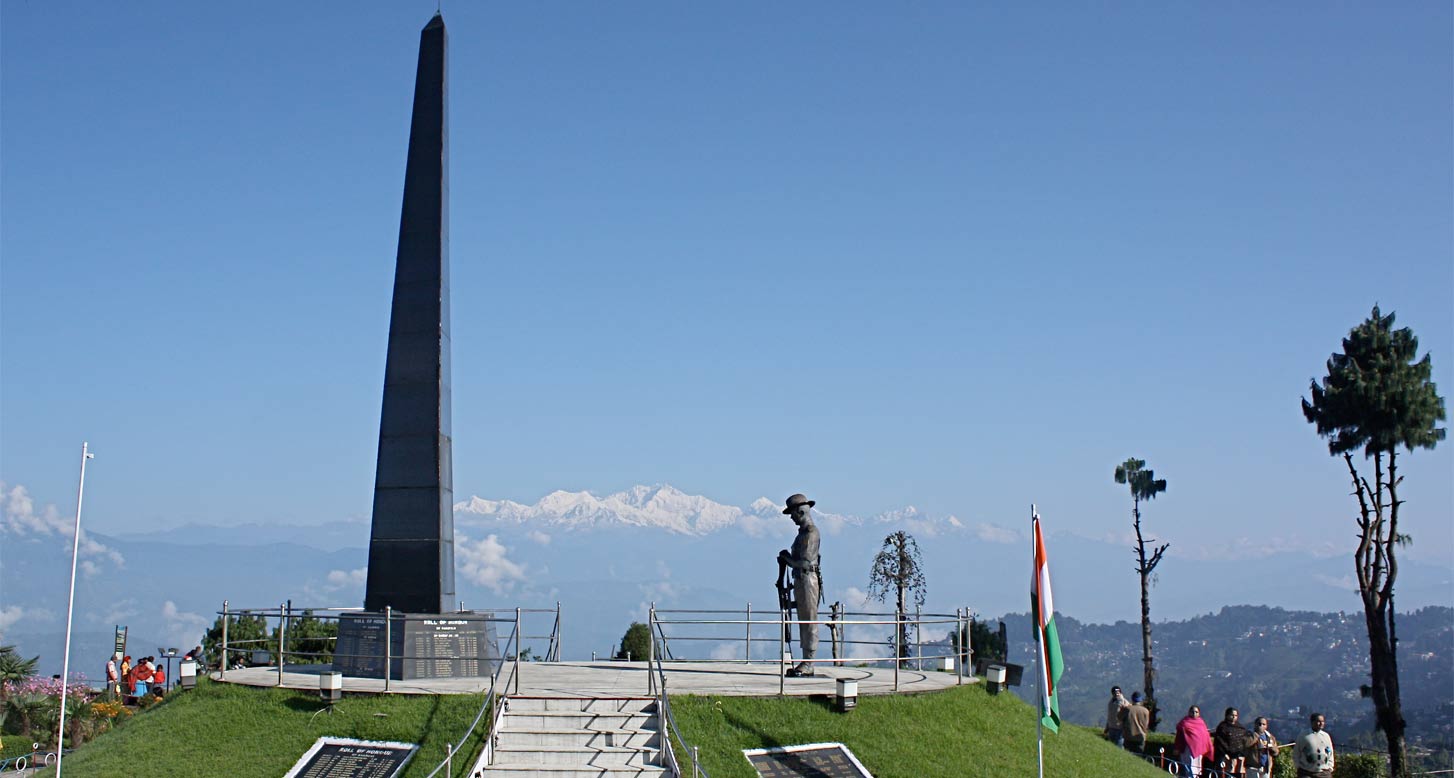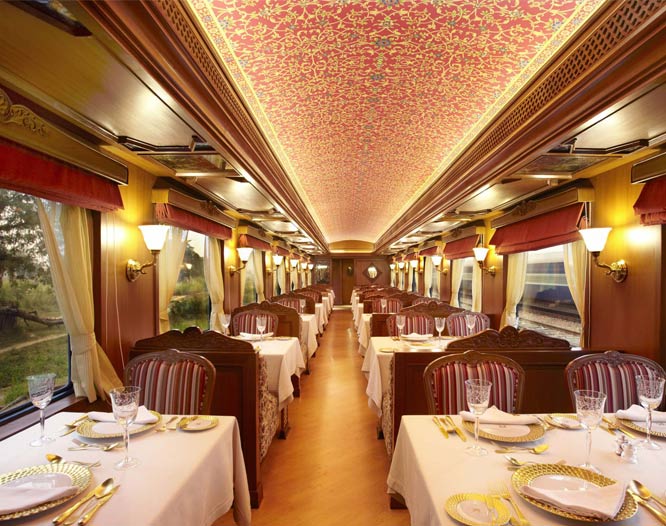
Days
Highlights: Half day tour of Old Delhi.
Description: After checking into our hotel this morning we meet our Tour Leader and discuss the tour ahead of us. In the afternoon we head for the narrow streets of Old Delhi. Once capital of the Mughal Emperor Shah Jahan, Old Delhi is a maelstrom of colour, noise and chaos, and, using a mixture of the old and the new - the metro and a cycle rickshaw ride - we reach the Chandni Chowk Bazaar, at the heart of the Old City. A highlight of Old Delhi is the Jami Masjid mosque. Built of red stone, the Jama Masjid, also known as Masjid-e-Jahanuma, is the largest mosque in India. The courtyard of the mosque measures around 1000 square meters and has a capacity of 100,000 people. In the centre of the courtyard is a tank and Hauz. This was built for the purpose of Wazu, compulsory ambulation done before Namaaz. In front of it is a raised platform called the Dikka. The mosque is so big that the Muatllawi (the second cleric), used to stand on the Dikka and repeat the Ayats said by the Imam (the chief cleric) to the devotees who were unable to hear him. The mosque took some 14 years to construct. From the top of the southern minaret there is a view of New Delhi. Nearby is the imposing Red Fort. Built in the 1600s its imposing red sandstone walls stand over 30 meters above the heart of the Old City which swirls around it. We'll take a rickshaw ride through Chandni Chowk and have a wander through the Spice Bazaar. Be sure to have a camera ready to capture all the wonderful sights including the chaotic electrical wiring, monkeys, traders on bikes with massive loads, and the traffic in general which by some kind of sixth sense and tolerance means drivers and pedestrians seem to just miss each other.
Locations: Delhi
Highlights: Ride the toy train to Shimla.
Description: After an early breakfast we head for the railway station to catch the train to Kalka, travelling in AC Chair Car class, a journey of some four hours. We arrive in Kalka, just to the north of Chandigarh, around mid-day and waiting for us on the adjacent narrow gauge track is the 'toy train' to the hill station of Shimla. The grandly named Himalayan-Queen Mountain Toy Train Express leaves at around just after mid-day; the tiny train winding its way slowly up into the hills, through over 100 tunnels and taking some five hours to complete a journey of some 96 kilometres. The train is a UNESCO World Heritage entity, and our journey, travelling in Chair class, is like travelling back in time. We pass through 20 railway stations, 102 tunnels, 800 bridges and around some 900 curves. In the late afternoon, having climbed somewhat over 1600 meters, we slowly roll into the station at Shimla. Once checked in at our hotel the evening is left free for us to explore what is arguably one of India's most famous hill stations at our own pace, given that a leisurely end to the day might be advisable after such an early start.
Locations: Shimla
Highlights: Guided walking tour of this iconic hill station.
Description: Shimla was perhaps the pre-eminent hill station of colonial days. With the opening of the Kalka-Shimla railway in 1903 it was possible for colonial families to escape the summer heat of the plains by spending a few months in Shimla. The town is notable for its colonial buildings; Christ Church, and the mock-Tudor architecture at Scandal point. There's also the Vice-Regal Lodge, where Indian Independence negotiations took place. There are huge hallways panelled with teak, and an imposing facade. We'll see these reminders of the days of the Raj on our guided walking tour of the town. There is also Christ Church, an 18th century Gothic style structure with beautifully adorned windows. In the afternoon there is the opportunity to take a walk out of town, perhaps up to the Jakhoo, or monkey, temple, dedicated to the Monkey God Hanuman, a steep 45 minute trek up from the Mall, Shimla's main street. The temple is worth walking to just for the views of the Himalayas, but beware of the monkeys who inhabit the temple; they have a tendency to steal whatever they can. Or an alternative is to walk to Summer Hill. In the early evening we leave Shimla by road for the drive down to Kalka, where we board the Kalka Mail for the start of our rail journey across northern India, travelling 2 tier AC Class .
Locations: Shimla
Highlights: Kalka Mail, ride the longest train on the Indian railway system.
Description: Around breakfast time we roll into the station in Delhi. Anyone taking the flight option will leave us here, re-joining us in Varanasi this evening. From Delhi we route via Kanpur and Allahabad as the day unfolds. The Kalka Mail is arguably the longest train running in India; classified as a super-express it usually consists of some 24 carriages. It has been running daily between Kolkata and Delhi since 1866, and between Kolkata and Kalka since 1891. In colonial days the Kalka Mail provided an indispensable link between the then seat of Government in Kolkata and the hill station of Shimla to where the government retired in the heat of summer. At the end of summer, therefore, the British rulers of India took essentially the same journey as we are taking today. Whilst there is a lot to see from the windows of your carriage the best way to get the most out of such a journey is to wander through the train and see who else is travelling. Indians tend to be friendly and hospitable and the day soon passes in conversation as we roll across the plains. In the early evening we arrive in Varanasi, where we take the short drive to our hotel.
Locations: Varanasi
Highlights: Varanasi, holy city on the River Ganges.
Description: We have a full day in Varanasi. The city is a large and sprawling place, and a pilgrimage centre for adherents of the Hindu faith. Said to be one of the oldest continually inhabited cities in the world, it sprawls along the banks of the sacred River Ganges; indeed the heart of the city is down at the Ghats along the river bank where pilgrims come from all over the world to cleanse themselves in the holy river. Fittingly then, we start our day with a transfer by coach or jeeps, to the Ganges, where we take a boat ride at dawn along part of the river, rowing slowly past the Ghats, giving a chance to observe life along the river, when pilgrims are usually performing the puja ceremony, and to watch life at some of the over 80 Ghats. Dashashwamedh Ghat is Varanasi's most popular and accessible Ghat with rows of pandas sitting on wooden platforms under bamboo umbrellas, masseurs plying their trade and boatmen jostling for custom. We may see cremations taking place at some of the Ghats; such ceremonies are of course not suitable for photographs. In the afternoon we take a guided walking tour through the twisting narrow streets of the old part of the city, full of colour and noise, markets and temples. In the evening we take a trip by cycle rickshaw through the narrow streets and back to the Ganges to see the evening 'aarti' ceremonies before we head for the station and the overnight train to the mountains, travelling 2nd class AC Sleeper.
Locations: Varanasi
Highlights: The Darjeeling Himalayan Railway, ride the toy train to Darjeeling
Description: Around mid-morning we arrive in New Jalpaiguri and from the station we drive to Kurseong where we join the toy train to Darjeeling. The Darjeeling Himalayan Railway, more usually referred to as the 'toy train' is a 2 feet narrow gauge railway built between 1879 and 1881. The line climbs from an elevation of 100 metres at New Jalpaiguri to some 2200 metres at Darjeeling. We will join the route at the hill station of Kurseong, some 20 miles from Darjeeling as the train from here to Darjeeling is usually hauled by an old British built steam locomotive. We should arrive in Darjeeling in the late afternoon. The hill station of Darjeeling lies at an altitude of some 2000 metres; it is still very redolent of the days of the British Raj, when the Bengal government officials escaped from the heat of the plains by decamping here, and is spectacularly located close to Kanchan Junga. Around the town the vast stretches of the emerald green tea gardens are the mainstay of the town's economy whilst the Darjeeling Himalayan railway is an iconic attraction. Darjeeling's situation on a ridge means a lot of hilly streets which are a challenge to walk around but the views more than compensate.
Locations: Darjeeling
Highlights: Darjeeling - tea plantations country; visit Ghoom Monastery.
Description: An early start today as before breakfast we drive some 8 miles out of Darjeeling to Tiger Hill, the highest viewpoint in the area, at around 2500 metres, to catch the spectacular views of Katchen Junga at dawn. The views are so good from here that at times it is even possible to see Everest. We return to the hotel for breakfast before taking an optional excursion out of town. Ghoom Gompa lies some 5 miles south of Darjeeling chef. Although well worth a visit in its own right, a visit to the Gompa offers the chance of an interesting walk through stunning mountain scenery, or it is possible, for those who want more of the toy train, to ride to the Gompa and walk back. In the afternoon we can visit the Himalayan Zoo with its snow leopard, Tibetan wolf and Red Panda, or visit the Tibetan Refugee Centre with its wealth of handicrafts. In the late afternoon we leave Darjeeling by road for New Jalpaiguri, where we board our last train of the tour, heading overnight to Kolkata.
Locations: Shiliguri
Highlights: Kolkata - Bengal's biggest city.
Description: We roll into the station in Kolkata just before breakfast, and transfer to our hotel with time to freshen up. Then we meet our guide and start a full day tour of the city. Kolkata was once India's capital, and even today it is the country's second city. Our tour will visit Dalhousie Square, with its architectural reminders of the days of the Raj; we'll visit St. John's Church. Another reminder of colonial times is the impressive white marble dome of the Victoria Memorial, a blend of Mughal and British architecture. The city has a wealth of temples and we'll visit a Jain and a Kali temple. There's also the Flower market and the village of Kumartuli, with its clay modellers, to visit. Mother Teresa's Home and Orphanage is well worth a visit; a memorial to the Serbian-born nun who was beatified in 2003 after over half a century of helping the poor of this vast city. The Dakshieswar Kali Temple is another of the city's many temples. After our guided tour the rest of the day is then left free for you to spend a few last hours just exploring the city at your own pace amidst the bustle, the colour, the chaos and the assault on the senses that is Kolkata
Locations: Calcutta
Highlights: After breakfast today your tour ends.
Description: Return to Onward Destination
Locations: Calcutta
The Tour Includes :
- 5 nights accommodation in mid-range hotels.
- 3 nights sleeper on overnight train.
- Included meals — 8 breakfast
- Tour Leader/Staff – Globally Immersed Indian Tour Leader from Delhi to Kolkata; local guides on sightseeing tours, and drivers.
- Single room option – Available at all hotels. Not available on overnight train journeys.
- Transport—Train; Coach; Cycle Rickshaw.
- International flights and taxes
- Single room supplement
- Comprehensive travel insurance (cover is compulsory)
- Meals other than included
- Gratuities and any items of a personal nature (laundry and drinks etc).


 +91 9810031654
+91 9810031654


